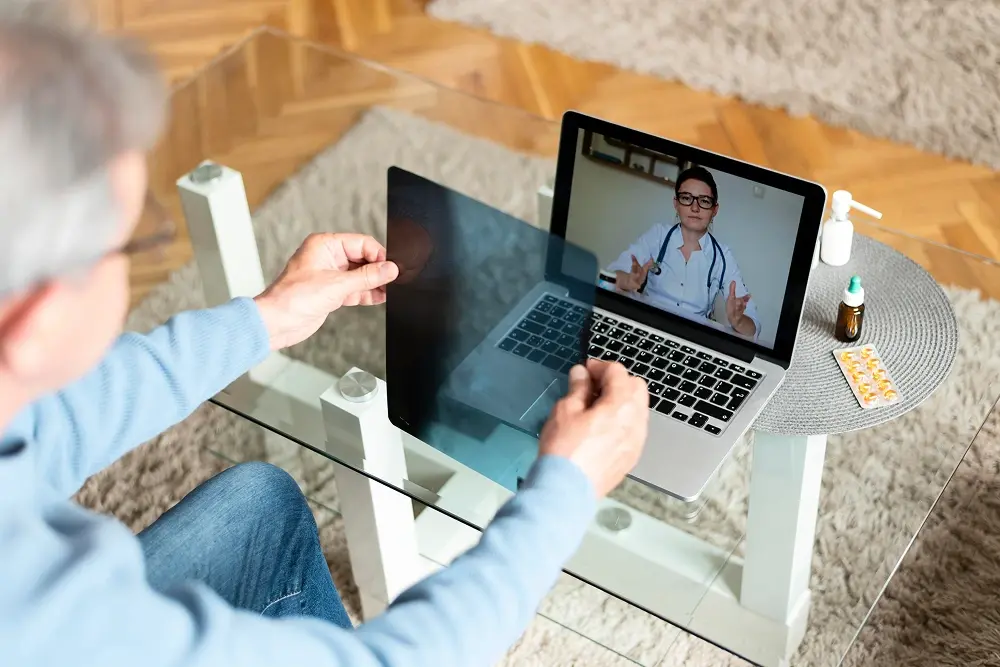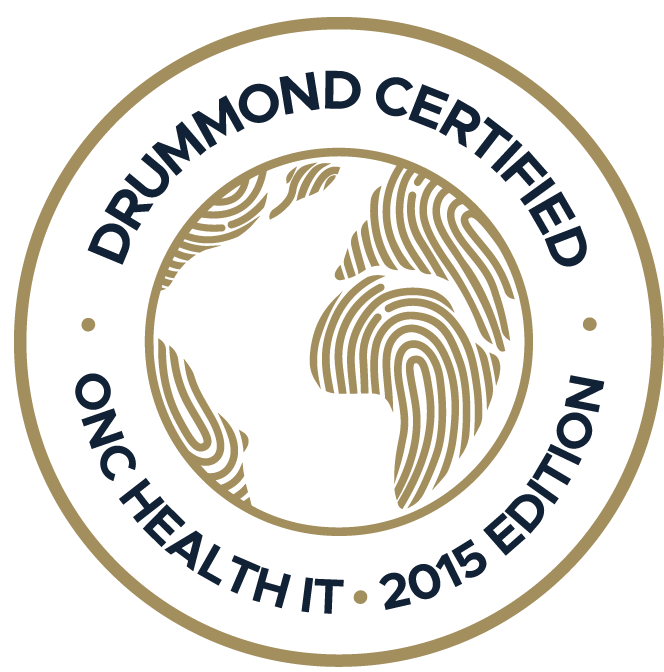Data breaches are the kind of thing that keep health administrators up at night. But when it comes to documentation, HIPAA AI scribes finally give them something to trust in.

A virus outbreak that began in China nearly three months ago has now infected more than 1,000 people in the United States according the World Health Organization (WHO). WHO declared the virus a "pandemic" during a news conference in Geneva on Wednesday. And somewhere hidden deep in each physician’s office, hospital, nursing home and Walmart pharmacy there is an employee scrambling to find the most appropriate diagnosis code for the latest national headline. Wait … What?
If this is a media blitz during a campaign year or a valid threat to our health and welfare the key connection lies between the task and the headline – in the source of the data. 1,000 people have been infected, based on data. Clinically the data is scientifically driven, but unless the Center for Disease Control (CDC), WHO, or any primary insurance company is willing to wade through each and every medical record and lab result, the source of the data comes down to a three to seven-character code. An ICD-10-CM code to be precise. In other words, the headline is really that 1,000 people have been treated within a medical facility and were assigned the diagnosis code associated with COVID-19. Is it possible that someone was treated and diagnosed, but “coded” as an unspecified virus?
It is easy to forget the power of the diagnosis code in the world of healthcare. Does it really matter if the patient’s neuropathy is assigned the code G62.9 (Polyneuropathy, unspecified) or E11.40 (Diabetic Neuropathy) or even G62.0 (Drug-induced polyneuropathy)? I suppose the office visit will be paid with any one of those three valid codes. But when that one claim is rolled into the insurance database that they share with the CDC in Atlanta which shares with WHO and statistics are used for persuasion, the devil is in the details.
In the United States, healthcare policy and reimbursement are framed around the term ‘medical necessity.’ Services are reimbursed when they are determined to meet, but not exceed the clinical needs of the patient. The patient with diabetic neuropathy and the patient with drug-induced polyneuropathy and metastatic malignancy are not the same. The course of treatment, resources needed for the best outcome may not be the same. Be cautious representing these two patients as being the same based on the diagnosis code(s) on the claim.
Defending the medical necessity of the services performed in any clinical setting relies on the accuracy of translating a clinical impression into a universal code set. This task frequently falls to a computer-assisted list of favorite codes. Be sure that you leverage all of the features your EHR offers to efficiently and accurately find the codes to define your patients. Just because the unspecified virus code is the easiest to find, doesn’t mean it is the best choice.
For more news and information about the Coronavirus (COVID-19) visit https://www.cdc.gov/coronavirus/2019-nCoV/index.html.
For more information on coding guidelines for the Coronavirus (COVID-19) visit https://www.cdc.gov/nchs/data/icd/ICD-10-CM-Official-Coding-Gudance-Interim-Advice-coronavirus-feb-20-2020.pdf.
RECENT POSTS



TOPICS
- EHR Solution (189)
- EHR (121)
- Patient Care (114)
- digital age (114)
- Medical Billing (107)
- Specialty-Specific EHR (107)
- Industry Update (94)
- Technology in Healthcare (82)
- EHR Features (77)
- Small Practice (75)
- Medical billing services (69)
- Integrated EHR (62)
- RCM (61)
- HIPAA Security (58)
- New Technology (44)
- Cloud-based EHR (43)
- Telemedicine (41)
- Healthcare Office Management (40)
- Practice EHR News (38)
- Kiosk (31)
- Revenue Cycle Management (28)
- AI Solutions (22)
- ePrescribing (21)
- AI Scribing (14)
- Best EHR Software (13)
- EMR (12)
- Practice Management Software (11)
- Client Favorites (10)
- Practice Automation (10)
- TeleVisit (10)
- The ONE (10)
- AI-powered Medical Billing (9)
- Switching to New EHR (9)
- MACRA/MIPS (8)
- Patient Portal (8)
- Urgent Care (8)
- AI Scribe (7)
- AI EHR (6)
- E-Prescribing (6)
- Product Updates (6)
- Psychiatry EHR (6)
- events (6)
- AI scanning (5)
- EHR Integration (5)
- MIPS (5)
- HIPAA (4)
- Insider (4)
- Internal Medicine EHR (4)
- MIPS Reporting (4)
- Mobile EHR (4)
- Orthopedics EHR (4)
- Podiatry (4)
- Podiatry EHR (4)
- Telehealth Platform (4)
- Automated Health Tools (3)
- Best EHR Practice (3)
- Chiropractic EHR (3)
- Digital Experiences (3)
- EHR Flaws (3)
- EHR for Chiropractors (3)
- Family Medicine EHR (3)
- Patient Check-in Kiosk (3)
- PracticeEHR GO App (3)
- Regulatory Updates (3)
- Telehealth Platforms (3)
- Clearinghouse (2)
- Dermatology EHR (2)
- EHR Scheduling (2)
- Eligibility Verification in Medical Billing (2)
- Foot and Ankle Care (2)
- Foot and Ankle EHR (2)
- Health records 101 (2)
- Integrated Practice Management (2)
- Medical Credentialing (2)
- Medical Practice Management Software (2)
- Quality of Patient Care (2)
- Reporting Under MIPS (2)
- Risk and Liability in Medical Settings (2)
- What Works Clearinghouse (2)
- AI Scan (1)
- Bariatric EHR (1)
- Behavioral Health Practices (1)
- Billing Communication (1)
- Billing for Private Practices (1)
- Cardiology EHR (1)
- Cash Flow (1)
- Cashless Payments (1)
- Charting (1)
- Data Security (1)
- Dos and Don'ts (1)
- EHR Guides (1)
- EHR Implementation (1)
- EHR KPIs (1)
- EHR Questions to Ask (1)
- EHR Transition (1)
- EHR for Chronic Illness (1)
- EHR for Small Practices (1)
- EMR vs EHR Difference (1)
- ENT EHR (1)
- Endocrinology EHR (1)
- Family Medicine (1)
- Gastroenterology (1)
- Gastroenterology EHR (1)
- General Surgery EHR (1)
- Geriatric AI scribe (1)
- Geriatrics EHR (1)
- Guides (1)
- Healthcare Compliance Certification (1)
- Healthcare Practice Office Management (1)
- Help Center Videos (1)
- Insurance Reimbursement (1)
- KPI (1)
- Key Performance Indicators (1)
- Lab Processing (1)
- MACRA (1)
- Medical Billing Partner (1)
- Medical Coding Services (1)
- Multilingual AI Scribe (1)
- Nephrology EHR (1)
- Neurology EHR (1)
- Pain Management EHR (1)
- Pediatrics EHR (1)
- Physical Therapy EHR (1)
- Practice Cash Flow (1)
- Practice Efficiency (1)
- Pulmonology EHR (1)
- Reconsider Your EHR (1)
- Simplify Practice Management (1)
- Staffing in Healthcare (1)
- Switch Medical Billing Providers (1)
- Urgent Care Medical Billing (1)
- Urology EHR (1)
- Voice-Activated AI Scribe (1)
- insurance claim denials (1)

.webp)

.webp)
.webp)



